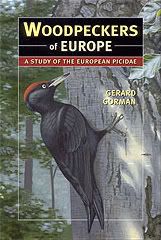Thursday, 13 September 2007
Woodpecker signs: ringing
Ringing is a series of small, more or less horizontal, holes or grooves which woodpeckers peck around a trunk in order to get at and drink sap. Ringing is sometimes referred to as “girdling" and the peck marks called wells. Ringing is less common amongst European woodpeckers than it is, for example, amongst North American species: there are no true sapsuckers in Europe. Great Spotted, Middle Spotted and Three-toed Woodpeckers are known to ring trees for sap. Syrian, Lesser Spotted and Green Woodpeckers probably do not ring trees themselves though they do take sap from wells made by other. Black Woodpeckers do not ring trees but drink sap from large holes knocked into pines. Woodpeckers ring trees so that sap flows out from the created wells and is mostly done in spring when the sap is rising. The wells pierce the bark and cambial strata of the trunk to tap into the sap conducting routes of the tree. Sunny south-facing trunks, where sap rises first and fastest are often ringed first and most intensely. On productive trees the ringing lines will continue and encircled (girdle) the trunk. Such line may be broken or zigzagged. Several tree species are ringed though pines Pinus and limes Tilia are favourites. Intense ringing can leave wide areas of exposed bark-less trunk. In a given population of Great Spotted Woodpecker most will ring trees but only certain birds will regularly and intensely ring trees.
Subscribe to:
Post Comments (Atom)





No comments:
Post a Comment